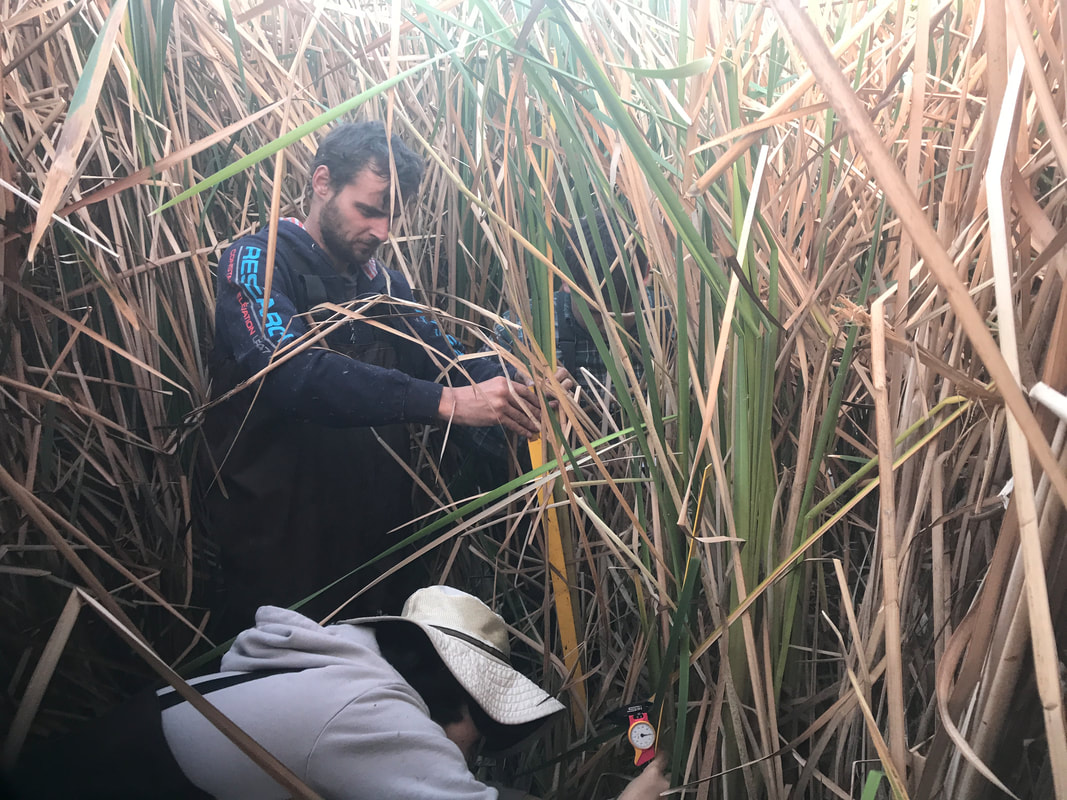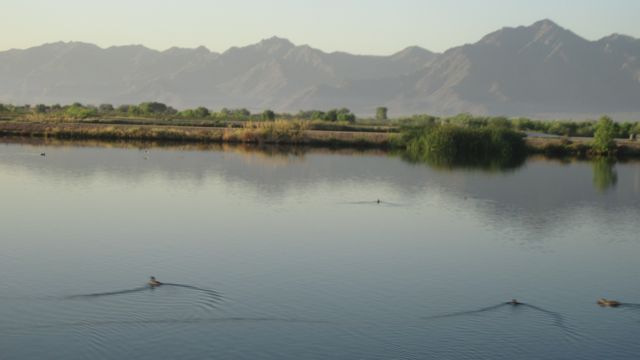Overview
|
Since 2011 WEEL has been studying the Tres Rios Constructed Wastewater Treatment Wetlands, which are owned operated by the City of Phoenix Water Services Department. While constructed treatment wetlands (CTW's) are well established as an effective and sustainable solution to the issues associated with urban water treatment and reclamation, how these systems operate in aridland environments compared to their more traditional mesic and temperate settings is not well understood. As such, we seek to better understand the ecosystem-scale dynamics of this urban oasis. Located just south of S 91st Ave and W Broadway Road in metropolitan Phoenix, Tres Rios is an accessible and enriching field laboratory for educational research experiences.
Watch the Tres Rios virtual field trip to learn more about the work that goes on! |
Methods and Approaches
|
We use a variety of different approaches and methods to understand the ecosystem dynamics of the Tres Rios Wetlands. Our methods include:
For more detailed information on some of these methods, please see our current Tres Rios publications listed below. |
Key Findings
|
Related Products
Your browser does not support viewing this document. Click here to download the document.
Bois, P, DL Childers, T Corlouer, J Laurent, A Massicot, CA Sanchez, and A Wanko. 2017. Confirming a plant-mediated “Biological Tide” in an aridland constructed treatment wetland. Ecosphere 8(3): e01756. 10.1002/ecs2. 1756
NA Weller, DL Childers, L Turnbull, RF Upham. 2016. Aridland constructed treatment wetlands I: Macrophyte productivity, community composition and nitrogen uptake. Ecological Engineering 97:649–657. doi.org/10.1016/j.ecoleng.2015.05.044
CA Sanchez, DL Childers, L Turnbull, RF Upham, and NA Weller. 2016 . Aridland constructed treatment wetlands II: Plant mediation of surface hydrology enhances nitrogen removal. Ecological Engineering 97:658–665 doi.org/10.1016/j.ecoleng.2016.01.002
NA Weller, DL Childers, L Turnbull, RF Upham. 2016. Aridland constructed treatment wetlands I: Macrophyte productivity, community composition and nitrogen uptake. Ecological Engineering 97:649–657. doi.org/10.1016/j.ecoleng.2015.05.044
CA Sanchez, DL Childers, L Turnbull, RF Upham, and NA Weller. 2016 . Aridland constructed treatment wetlands II: Plant mediation of surface hydrology enhances nitrogen removal. Ecological Engineering 97:658–665 doi.org/10.1016/j.ecoleng.2016.01.002


